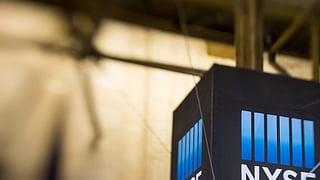The BSE Sensex scaled above 28,000 for the first time on Wednesday and the 50-share Nifty also hit a record high above 8,350. The rebound in domestic equities has come after a brief correction in October, when the Sensex ended below 26,000. But, the benchmark has taken just 12 sessions to accumulate 2,000 points from October 16 and at current rate, it may well cross 30,000 by the end of the year, making 2014 one of the best years for equities since 2009. (Read the full story here)
The BSE Sensex scaled above 28,000 for the first time on Wednesday and the 50-share Nifty also hit a record high above 8,350. The rebound in domestic equities has come after a brief correction in October, when the Sensex ended below 26,000. But, the benchmark has taken just 12 sessions to accumulate 2,000 points from October 16 and at current rate, it may well cross 30,000 by the end of the year, making 2014 one of the best years for equities since 2009. (Read the full story here)
In normal circumstances, investors would turn circumspect after such a strong rally, but the current mood on the Dalal Street is anything but subdued. Bank of America, which spoke to 80 large investors in the US and Asia last month, said the overwhelming sentiment was "overweight" on India. This consensus bullish tone should be a reason for worry or caution for investors. Remember Warren Buffett often says that investors should be fearful when others are greedy. (Also read: Why markets are up)
Here are some reasons why investors should be cautious amid the current euphoria:
1) Overseas flows are slowing: The over 30 per cent year-to-date surge in Sensex and Nifty should be attributed to strong fund flows. According to Morningstar, the total value of FII investment in Indian equity markets as of September 30, 2014 was $294 billion or over 19 per cent of the market capitalization of India. This is one of the highest levels of FII investments in the country. In the first two quarters of 2014, net FII flows in equities totaled $10.8 billion, but the third quarter (ending September) saw flows worth $3.1 billion only. The fourth quarter has started on a negative note, with FIIs selling equities in October.
2) Short-term support, but uncertainty remains: The sharp deceleration in FII flows coincide with the end of the six-year monetary stimulus by the US Federal Reserve in October. The first few days of November have seen robust FII flows as the Bank of Japan has announced a massive stimulus, which will boost Indian equities in the short-run. The real test for India will come when the US Fed starts raising rates sometime next year. Noted economist Moses Harding says, "Indian financial markets cannot stay ring-fenced despite domestic euphoria nor take comfort from upside momentum in growth or ease in inflation or significant improvement in fiscal deficit". (Read Mr Harding's advice for investors)
3) Global economy continues to weigh: The continued uncertainty about growth prospects in Eurozone, Japan and emerging markets has led economist Nouriel Roubini to compare the global economy to a jetliner. Mr Roubini says the global economy is flying on a single engine (US). Of the five BRICS economies, three (Brazil, Russia, and South Africa) are close to recession, while the biggest (China) is in the midst of a structural slowdown, he says. Past experience (2008) has shown that India cannot stay immune to what's happening around the world. (Read)
4) Red flags about Indian economy: Improving economic fundamentals are indeed a source for confidence in equities. The rebound in first quarter GDP (5.7 per cent), fall in inflation and expected narrowing in fiscal deficit demonstrate reasonable strength in the Indian economy. However, credit growth has remained subdued this year, which indicates demand is not picking up yet. The slump in industrial output in July and August is also worrisome as it indicates no revival in investment cycle, Care Ratings says. There are other concerns too: Export slowdown, widening trade deficit, weak auto and home sales - all of which raise doubt about a robust recovery. In fact, Icra Ratings expects September quarter GDP to moderate to just 5 per cent. (Read more)
5) Much hopes on rate cut, reforms: The latest rally is based on hopes of an earlier-than-expected rate cut announcement, traders say. But many economists believe that the RBI is unlikely to reverse its hawkish stance on inflation just yet. Similarly, there are different view about how fast the government can undertake difficult reforms such as implementing the goods and services tax (GST), cutting down subsidies and easing labour laws. (Read: What Finance Minister Arun Jaitley Said on Reforms)

 Sign Up with Google
Sign Up with Google




 RECOMMENDED FOR YOU
RECOMMENDED FOR YOU





